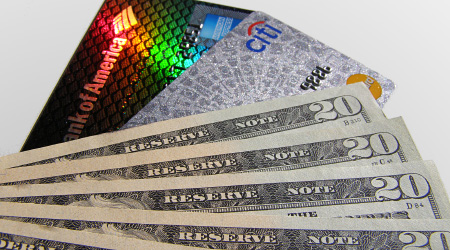What Does Credit Card APR Mean?

When examining a credit card statement you will come across a field denoting the interest rate currently applied to you debt as the APR or Annual Percentage Rate. Many consumers understand this to be the current interest rate charged on purchases they've made using their available credit. This however can be slightly misleading because all consumers know there may be additional fees which can affect the balance as well as differences in the interest rate from month-to-month due to variable interest rates.
For most consumers who use credit cards the differences between the Annual Percentage Rate and what actually gets applied to the balance are small and often do not adversely affect the ability to pay down credit card debt. In a stable economic environment where interest rates are unlikely to change then the APR is an adequate estimation of what the interest rate will be for 6 to 12 months. But an interest rate most consumers know little about is called the Effective Annual Rate or EAR. For some consumers who are sometimes penalized with over the limit fees, late payment fees and subsequent universal default interest rates the APR will mean little and the EAR will become a more accurate reflection of what they are paying in interest.
The reason why it is important for credit card users to understand the difference between an APR and EAR is because the latter term is not legally recognized as an interest rate specification but it is a more accurate reflection of what consumers will be paying on debt. The effective annual rate reflects one-time charges such as late fees or penalties fees. The EAR will also adjust the interest rate if the account goes past due and show interest rates based on different balances such as transfers or holiday purchases. These many different factors create the effective annual rate which is what will actually be paid as interest which includes anything above and beyond what was actually purchased by the consumer.
Credit card interest rates in today's free-market are determined by combination of a base rate and the interest rate charged by the Federal Reserve. Interest rates for credit cards can vary based on a cardholders credit worthiness and FICO score as well as the different types of credit cards offerings like those with perks or just the basics. If you've ever looked at the mortgage documentation when purchasing a home this is another scenario where you will see a difference between the APR which can be 5.99% and the effective annual interest rate which can be 6.23%. The differences have to do with complicated math and compounding which can be somewhat misleading and hard to determine whether or not you got a good interest rate on your loan.
As stated earlier, for most consumers utilizing standard credit cards the APR printed on their statement will be a very close approximation of the interest they can expect to see applied to monthly payments. If however you're the type of consumer that may be subject to penalty interest or additional fees then your APR may be substantially higher as a result. In general terms the annual percentage rate or APR for credit cards is what you can expect to pay in interest added to the balance on a month-to-month basis. If you have a 12% APR then every month a 1% interest fee will be applied based on a 30 day average balance for that month. So if you have $1,000 balance then $10 in interest will be added to the principal at the end of the month. However because of the difference between APR and EAR there will always be some variation so it's best to double check your credit card statements every month.







